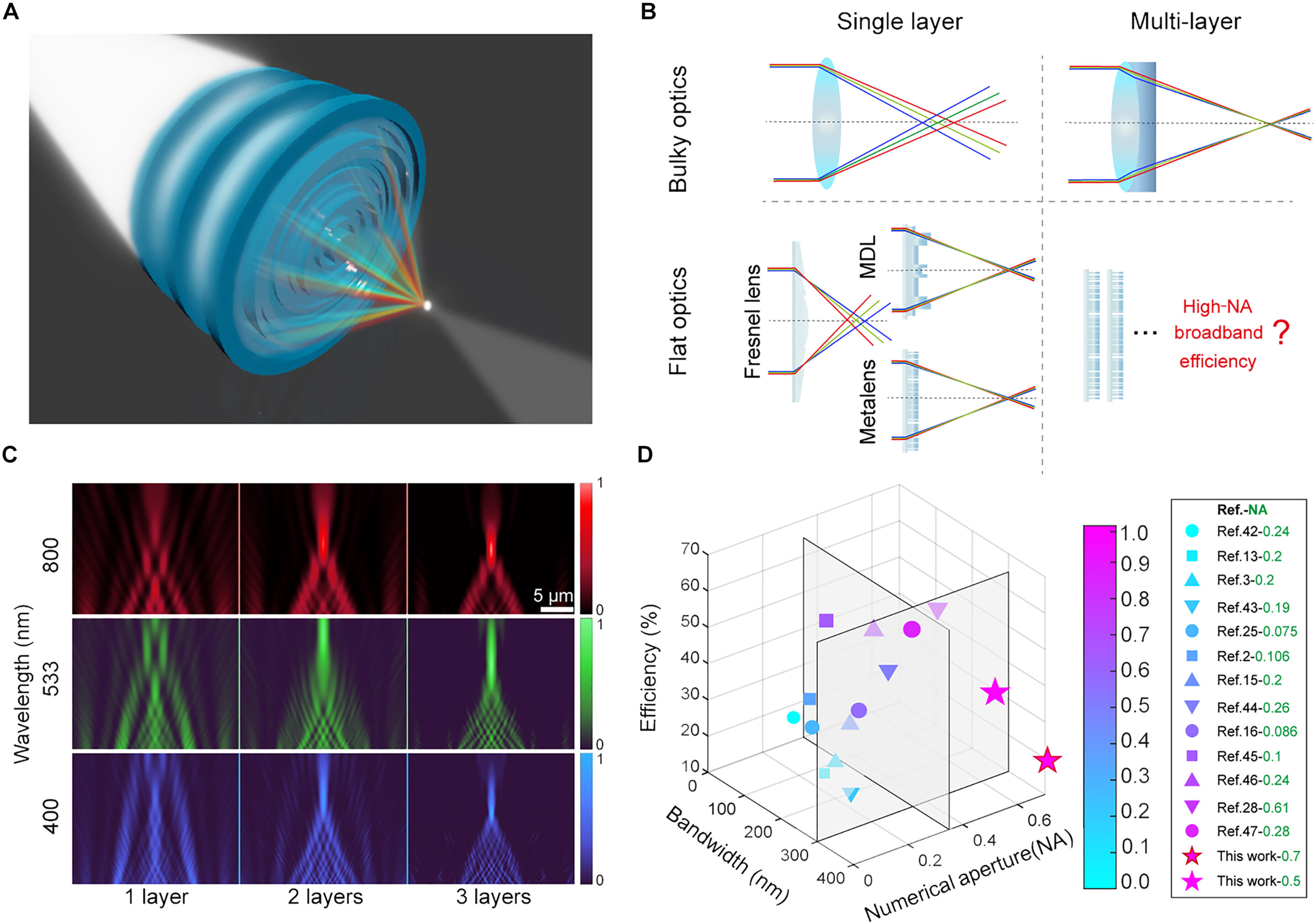Flat optics are created using nanostructures made of high-refractive index materials. These optics have thin form factors and only function at specific wavelengths.
By combining topology optimization and full wavelength simulations, materials scientists have been able to design metalenses using two-photon lithography. The research team demonstrated the broad imaging capabilities of these engineered structures under white light and narrowband illuminations in red, green, and blue.
The results highlight the ability of 3D-printed multilayer structures to create broadband and multifunctional meta devices. These findings have been published in Science Advances and are featured on the journal’s cover page.
Recent advancements in metalenses at both the micro- and macro-scale have shown their significance in achieving impressive imaging performance for various applications in light-field imaging, bioanalysis, medicine, and quantum technologies. Achromatic lenses, for example, offer broadband responses to capture color information, expanding the possibilities for designing and implementing photonic devices.
These constructs are ultra-compact, ultra-thin, lightweight, and ideal for creating powerful metalenses for imaging systems. However, most metalenses are patterned using high refractive index materials, which poses challenges for achieving broadband implementation due to strong light.
2023-12-31 05:00:03
Source from phys.org
